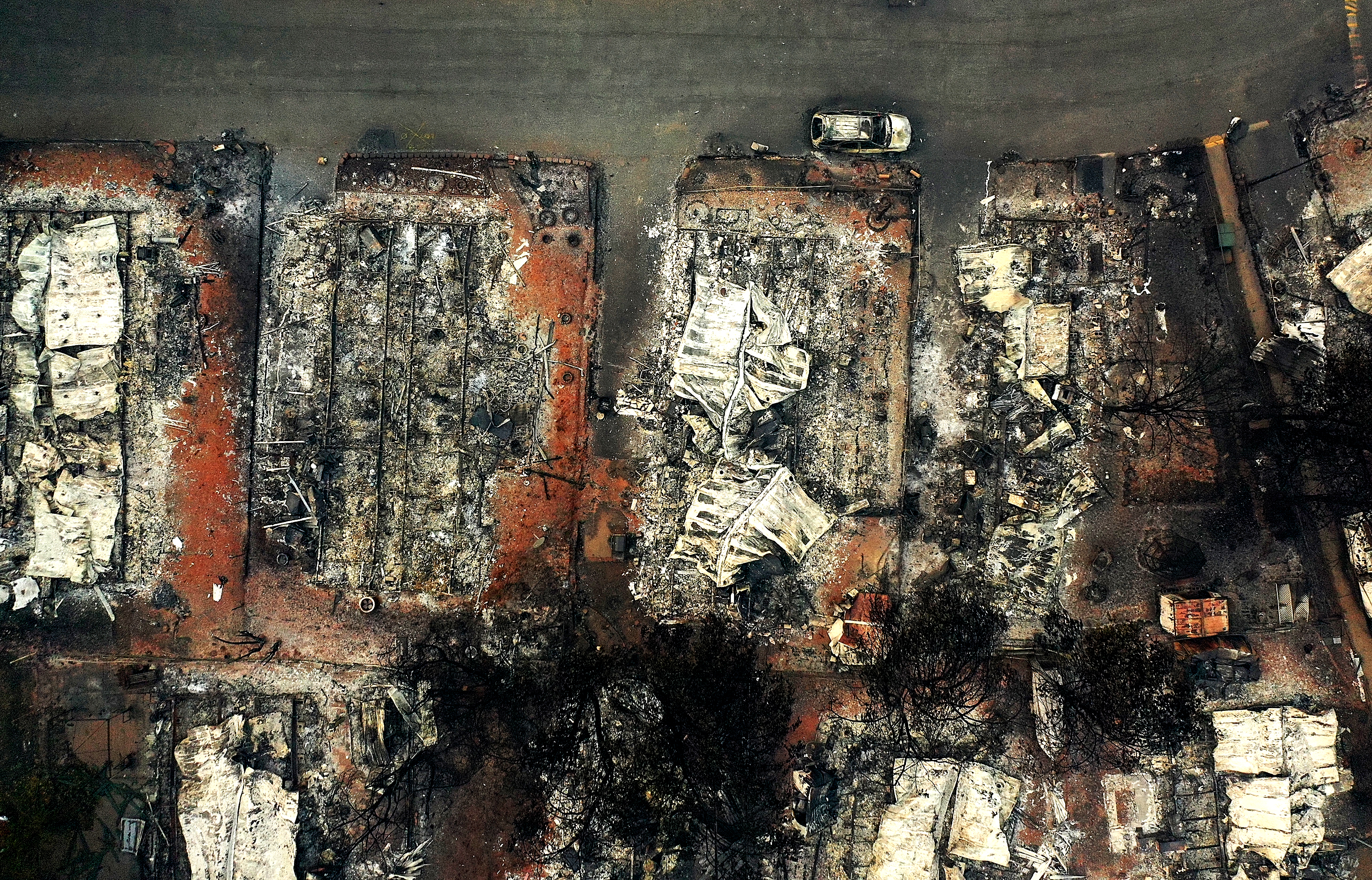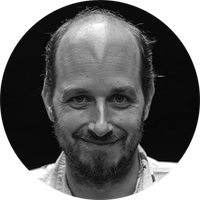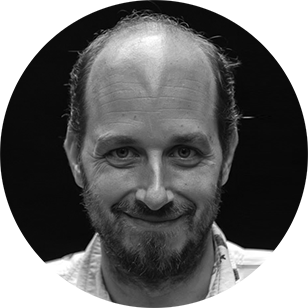Fire in Paradise is 40 minutes of terror
You might not want to watch this one. You might not be wrong.


Despite the growing ubiquity of California's wind-driven megafires, 2018's Camp Fire remains a uniquely horrific disaster, a perfect storm: in a matter of hours, on November 8, an entire town disappeared. A year later, Paradise is "recovering," but though the cleanup has been dramatic, the statistics still tell their own story. 317 building permits have been issued and 12 homes have been rebuilt, out of the nearly 19,000 structures destroyed. Once a town of 27,000 people, Paradise was declared "rural" by the state after a house-to-house survey in April showed barely 2,000 residents remaining. 85 lives were lost.
Drea Cooper and Zackary Canepari's 40-minute Fire in Paradise, released on Netflix last week, doesn't really put its subject in context. It doesn't spend much time on the scope of the disaster — which affected neighboring Magalia and Concow as well — nor does it explore what the future of the town will be. Other videos and documentaries do a much better job of that, and if what you want is that kind of big picture, you have a lot of options. A local filmmaker made a documentary within the first month (as have a variety of media outlets), the California Forestry department recently put out a short video focused on fire suppression, Vice made a documentary, and PBS has released multiple documentaries that do a good job of broadening the context. Ron Howard has been working on a National Geographic documentary that will focus on the long aftermath, and his won't be the last, I'm sure.
Fires are photogenic. And because it's the 21st century, a tremendous amount of first-person footage of the fire was taken by residents, much of which you can find on the internet right now, in terrifyingly raw form. The heart of Fire in Paradise is this kind of footage, in place of statistics or "expert" commentary. Instead, the film is quite short, terrifyingly intense, and skillfully manipulative in either the best or the worst way, mixing bloodcurdling cell-phone footage with studio interviews of people who all seem on the verge of weeping. Organized as an hour-by-hour account of the worst of the fire, it's incredibly effective in splicing adrenaline-pumping footage together with halting monologues on the lingering effects of trauma. One cut in the middle made me gasp out loud, a sudden jump from two children struggling to describe how they did their best to be brave to a first-hand dashcam video of a car literally driving through walls of flame, as the driver prays out loud.
The Week
Escape your echo chamber. Get the facts behind the news, plus analysis from multiple perspectives.

Sign up for The Week's Free Newsletters
From our morning news briefing to a weekly Good News Newsletter, get the best of The Week delivered directly to your inbox.
From our morning news briefing to a weekly Good News Newsletter, get the best of The Week delivered directly to your inbox.
In that moment, as she's desperately fleeing for safety, it was anything but clear that she — or anyone — would survive, and that describes most of the original footage. There are videos from people who are preparing for their own death and audio of phone calls to loved ones that could be their last. A police officer describes forcing a man to leave his dog behind. A pair of teachers recall being on a bus full of schoolchildren, stuck in traffic, as the kids began getting sleepy and confused, feeling the first effects of smoke inhalation. There's a brief snippet in which the camera pans over actual human remains — what's left of a skeleton sitting in the driver's seat of a car — but it's so quick that you can easily miss it, as I did.
It's a lot, basically. A friend described seeing the trailer on Netflix and immediately clicking away, something I suspect many people have done, far more than have made themselves watch it. To see the other Camp Fire documentaries, you have to seek them out; when Netflix features it on the front page, Fire in Paradise leaps out at you, even autoplays. You have to look away, and if you let the mouse hover over the image for a few seconds, the fire will crackle into life in front of you. But if fires are photogenic — and if one response to this movie is to bear witness, and to feel as if you must — another reaction, I suspect, is to desperately close the application, to watch anything but this. Who, after all, wants to watch what is most likely the most terrifying, traumatic, and devastating day in the lives of everyone involved? Why would we want to hear people praying for their lives — in what they think might be their last minutes — or witness their struggle, months later, to find words adequate to the experience?
If Fire in Paradise is a terrifyingly effective movie, I can't help ask: effective at what? At times, it feels like voyeurism, exploitation, even like a snuff film. It feels ghoulish to watch it. I don't know what to think about that scene in which we see some poor person's skeletal remains; I don't know because I didn't notice what I was seeing when I was first watching the movie, and I haven't gone back to look.
I'm not sure this is a criticism. One of the strangest things about the documentary is how short it is: at barely 40 minutes long, it goes by in a flash. It could so easily have been longer, could have lingered over and belabored the material much more than it does. So many people were affected and there is so much stunning footage of it, so many stories they could have included, that they didn't, while the stories they do tell feel truncated, abbreviated. Nearly everything that appears on screen almost cries out for more context, more information, more detail. Everything they say raises questions.
A free daily email with the biggest news stories of the day – and the best features from TheWeek.com
This feels like a choice, and it's an interesting one. After all, you can easily find more stories of the Camp Fire, if you want, more traumatizing footage, more detail on the people involved. But the brevity of Drea Cooper and Zackary Canepari's film allows them to show — to force you to feel — the experience of speed, how quickly it happened, how totally and beyond comprehension it was while it was happening, and then how quickly it ended. There is something true about that confusion and disorientation that a longer documentary couldn't show.
It's possible, in retrospect, to stand aside from the fire and talk about things like forest fuels, climate change, PG&E's deferred maintenance, public land management, residential zoning in the Wildland-Urban Interface, building codes, fire suppression, evacuation routes, on and on and on. With some distance, the fires have become ideological hobby-horses. But on November 8 last year, no one was thinking of these things, not yet; if there's one thing the movie captures, it's that moment, and with a disturbing vividness that will stay with me a long time.
Want more essential commentary and analysis like this delivered straight to your inbox? Sign up for The Week's "Today's best articles" newsletter here.
Aaron Bady is a founding editor at Popula. He was an editor at The New Inquiry and his writing has appeared in The New Yorker, The New Republic, The Nation, Pacific Standard, The Los Angeles Review of Books, and elsewhere. He lives in Oakland, California.


